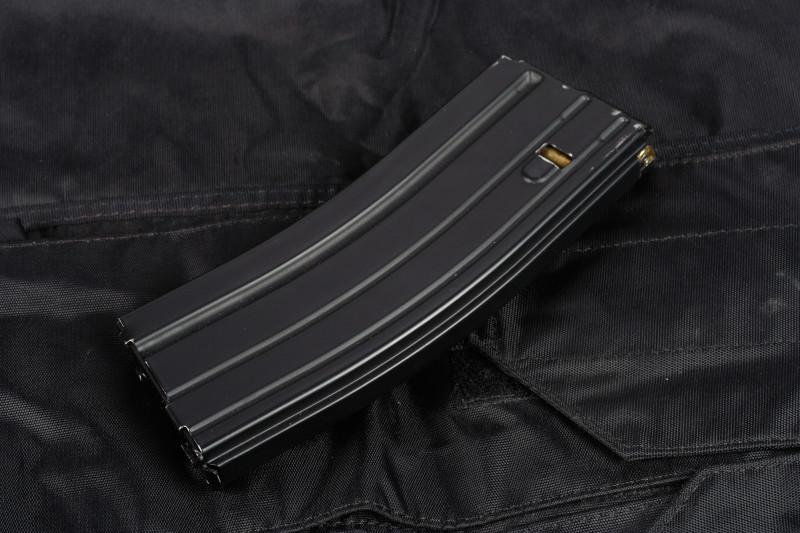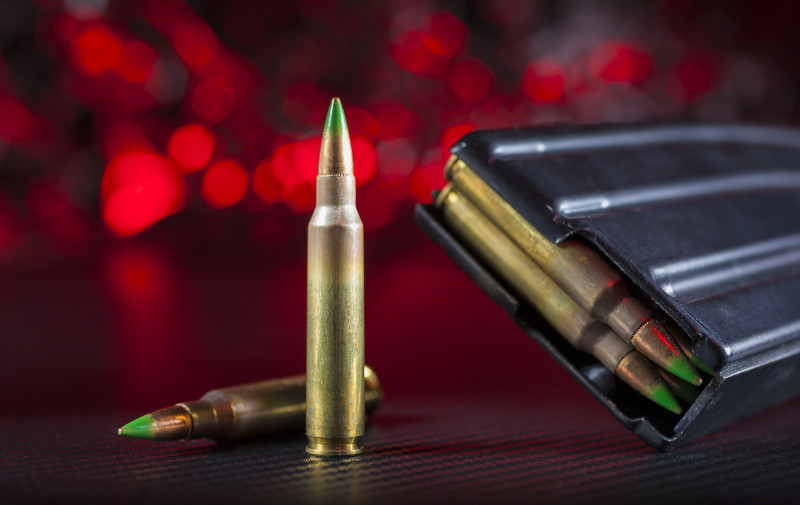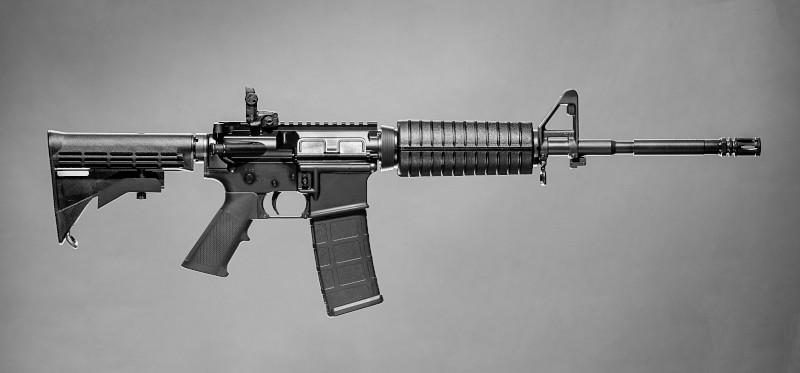Between the recent coronavirus scare shutting down gun stores in many states and the flareup of protests and riots demonstrating to Americans that police can’t keep them safe, gun sales are hitting record highs. Americans are buying more guns than ever, and many of those owners are first-time gun buyers. They may not know what they’re doing, or how to operate the firearm, they just know that they need a gun to protect themselves.
If you’re a first-time gun buyer, know that many of us have been in that situation before. The realization that you’re now in possession of a firearm that you might have to use to take a life can be a daunting one, but it can be easier on you if you actually learn how to treat it with respect, handle it safely, and learn how to use it properly.
The AR-15 is the most popular firearm in American today bar none, and many of the first-time gun owners today are likely buying AR-15s. If you’re a first-time AR-15 owner, here are a few useful tips that might help you with your new AR-15 rifle or pistol
1. Get Training
Whether it’s a new shooter course, a basic carbine course, or even just a hunter education course, a little bit of training goes a long way. If you can’t find in-person instruction because of COVID-19, start checking out YouTube for firearms instruction.
There can be a lot of yahoos out there teaching bad habits, so start off by watching well-known firearms instructors such as Larry Vickers at Vickers Tactical, or the instructors at the National Shooting Sports Foundation. You could even buy the Magpul DVD series on the AR-15 carbine. And don’t neglect the importance of dry firing when it comes to training. Just make sure to take proper safety precautions and never have live ammunition around when you’re dry firing.
2. Stock Up on Magazines
An AR-15 is useless without magazines, so you’ll want to have plenty on hand. Make sure you have enough for at least one combat load (7 magazines) and preferably replacements for each one of those.
Magazines for the AR-15 are cheap, with most aluminum and polymer magazines running $10-15 apiece. If you’re in a state that allows standard capacity magazines (30 rounds), stock up on as many as you can. You never know when your state will decide to turn blue and try to ban new acquisitions of standard magazines, so buy them cheap and stack them deep.
3. Buy Ammo or Learn to Handload
There’s been a run on ammunition across the country recently, so you may find ammunition hard to come by. And depending on which range you shoot at, you may not be able to shoot commonly available ammunition there. Some ranges ban the use of steel core or steel jacketed ammunition due to concerns about sparking and fire hazards. For those with 5.56mm or .223-chambered AR-15s, this means that 62-grain M855 “green tip” and similar ammunition is banned, as are the bimetal-jacketed bullets found in steel-cased Russian ammunition.
Most new shooters will probably want to stock up first on 55-grain M193-style ammunition, which is readily available. Its performance isn’t the greatest for self-defense purposes, but it’s good for plinking and general practice. Your next move will be to find a defense load that you think will perform well in your rifle or pistol. That generally means moving to loads featuring Speer Gold Dot or Nosler bonded bullets, or heavier 75- to 77- grain ammunition such as Mk 262, or loads featuring the Sierra MatchKing and similar bullets.
If you get really interested in shooting, handloading may be the thing for you. Not only will you be able to choose the exact bullet you want, you’ll also be able to tune loads for your rifle for accuracy and velocity, as well as take advantage of lower per-round costs for your reloads.
4. Customize and Accessorize
We’ll assume that most people buying new AR-15s are going to be buying one with an A3-style “flat top” upper receiver, with the standard clamshell handguards and with the standard front sight post.
a. Optics
If you have a front sight post, the first thing you’re going to want to buy is a rear sight, as long as your rifle doesn’t come with one already. In most cases you’re going to want a flip-up rear sight, something that can fold down out of the way so that it doesn’t interfere with your other optics choices.
While there’s nothing wrong with an AR-15 using only iron sights, modern developments in optics make it a no-brainer to place optics on an AR-15. And you have a number of options.
I. Red Dot Sight
Red dot sights are probably the most popular optics around today. They’re not the best for shooting at long ranges, but they’re great for quick first shots, which makes them a good choice for home defense. Options today range from sub-$100 Chinese-made optics to $500 red dots from makers such as Aimpoint. Battery life is often measured in thousands of hours, so they’ll be on when you need them.
II. Low Power Variable Optic (LPVO)
LPVOs have taken the shooting world by storm. 10-15 years ago, a 1-4x scope was cutting edge, but today shooters have the option of 1-6x, 1-8x, and even 1-10x scopes. Here too, prices will range from $200 budget options to high quality glass over $1,000.
LPVOs aren’t the best for AR-15s with a fixed front sight post, as the front sight will get in the way of your scope’s view. If you bought an AR-15 with a free-floating handguard, you’ll have no front sight in the way.
III. Prism Optic
Prism optics have been around for a while, starting with the Trijicon ACOG. Those are expensive, however, and newer options such as those from Primary Arms are beginning to become available in the $250-350 range. Prism optics have a larger form factor than red dots, are magnified at a fixed power, and have a reticle that is etched onto the glass. That means that, like LVPOs and unlike red dots, if their battery dies, you still have a usable optic.
IV. Holographic Optic
Holographic optics such as those from EOTech were once very popular, especially for those with astigmatism. But concerns about shifting zeroes in cold weather and adverse conditions diminished the popularity of EOTechs in particular. With red dots now offering many of the same reticle types as holographic optics, as well as being a lot cheaper, there aren’t too many holographic sights on the market anymore.
b. Handguards
If your AR-15 upper came with the standard clamshell two-piece handguards, you may want to change them out for something more ergonomic. Numerous manufacturers such as Daniel Defense, Midwest Industries, and Yankee Hill Machine offer two-piece drop-in handguards that are one-to-one replacements for the clamshell handguards. Some shooters opt to replace the entire barrel nut and handguard assembly with a free-float handguard, although that takes either specialized tooling or a trip to a gunsmith.
Replacing the clamshell with a more modern handguard allows the attachment of numerous accessories to the handguard that can be of use. There are three major attachment types in use today.
I. Picatinny
The Picatinny or MIL-STD-1913 rail standard is the most common mounting standard available today. It’s been in common use since the early 2000s on handguards, with the “quad rail” being the earliest form in use. The sharp edges of the Picatinny rail have been denigrated as feeling like a cheese grater on the hands, sometimes requiring the use of gloves to hold if the edges are particularly sharp.
II. M-LOK
Magpul’s M-LOK system looks to be the long-term successor to the Picatinny mounting system, having been chosen by US Special Operations Command for its future mounting needs. M-LOK features smooth sides with slots milled in to mount various items, and allows handguards to be much slimmer.
III. KeyMod
KeyMod is the other mounting system on the market, although it lost the SOCOM selection process to M-LOK. You’ll still see some manufacturers offering KeyMod products, but they’re becoming less commonly available.
c. Stocks and Braces
If your AR-15 came with a 16” barrel, in all likelihood it came with a collapsible M4-style stock. There are dozens of different stocks on the market today, from numerous manufacturers, with different price points. Whether you want a better feel, a more minimalist stock, or more storage options, you can customize your carbine with any collapsible stock you feel like.
If you purchased an AR-15 pistol (barrel shorter than 16”) then it likely came with a pistol brace. Among the most popular are the SBA-3 and the KAK Shockwave. You could also experiment with different pistol braces, although the selection isn’t quite as varied as with stocks. You also need to make sure that you never place a stock on an AR-15 pistol unless you have an approved tax stamp from ATF to manufacture a short-barreled rifle, as that would constitute manufacturing an illegal short-barreled rifle.
d. Grips
The standard AR-15 pistol grip isn’t the most ergonomic or most comfortable in the world. Most shooters will change out their grip for something that feels better in the hand. From Magpul to Hogue to TangoDown, there are dozens of options out there for every shooter.
Many shooters will choose to mount a vertical foregrip on their handguard too, to help maintain control of the firearm. Others will choose an angled foregrip or a handstop. And be aware that you can’t put a vertical foregrip on an AR-15 pistol, otherwise you’ve created an illegal any other weapon (AOW).
e. Lights
If you intend to use your AR-15 for home defense, there’s a high likelihood that you’ll be shooting at night. That means that you’re going to want to have a light mounted on your rifle. Manufacturers such as Olight, Streamlight, and Surefire all provide options that fit the AR-15.
The type of light you mount could be something small like a TLR-1, or something larger like the Streamlight HL-X or Surefire Scout series. In order to mount these, you’ll need a handguard that allows for mounting, such as a Picatinny or M-LOK system.
f. Muzzle Device
Many shooters also customize their muzzle devices. Your AR-15 probably came with a standard A2-style flash hider. It’s perfectly acceptable for hiding muzzle flash at night, preventing you from blinding yourself at night. But many shooters decide to customize their muzzle device anyway. Here are three types they choose.
I. Flash Hider
There are more effective flash hiders on the market than the A2-style “bird cage.” These are generally longer flash hiders with four prongs, such as the Smith Vortex and YHM Phantom. While it may not be noticeable immediately to the naked eye, watching the performance of these flash hiders on slow motion video makes it clear that they’re far more effective.
II. Muzzle Brake
Muzzle brakes will result in a lot more noise and muzzle flash than flash hiders, but they have the benefit of reducing felt recoil in many cases. Of course, 5.56 NATO ammunition doesn’t have much recoil to begin with, so the need for a muzzle brake on an AR-15 of that caliber is questionable.
III. Suppressor Mount
Then there are muzzle devices that function as both a muzzle brake and/or flash hider as well as allow the shooter to mount a sound suppressor (a.k.a. silencer). These will be a lot more expensive ($100+) and should be purchased in combination with a suppressor.
g. Suppressor
For those who are interested in reducing the noise from shooting, especially for home defense firearms, a suppressor could be a good choice. Because suppressors are regulated under the National Firearms Act, you’ll have to apply to ATF for your $200 tax stamp when purchasing a suppressor. Purchasing a suppressor requires a completed ATF Form 4, fingerprints, etc. If you’re purchasing a suppressor from a dealer, the dealer should be able to walk you through the process. Just be aware that the wait times for Form 4 approval have been quite long in recent years, with waits of 9-12 months not being unusual.
h. Night Vision
In conjunction with a suppressor, many shooters opt to purchase some sort of night vision. You’ll see this most often among those hunting feral hogs, but night vision can also be beneficial for home defense. Just be aware that night vision is a whole other animal from firearms, and is an expensive world to enter. Expect to pay $5,000+ for a complete 3rd generation night vision setup, from helmet to mounts to infrared flashlights and lasers.
This may be a long article, but it’s still only just scratching the surface when it comes to explaining all the options you have available foryour AR-15. Each subsection could be a full article in and of itself, and it just might be if reader interest is there. With the AR-15 quickly becoming the firearm of choice for those looking to defend themselves and their families from mayhem, Americans need all the information and advice they can get about AR-15s to make sure they’re able to employ them as effectively as possible.


